Matteo Zambra
Multi-Modal Learning-based Reconstruction of High-Resolution Spatial Wind Speed Fields
Dec 14, 2023



Abstract:Wind speed at sea surface is a key quantity for a variety of scientific applications and human activities. Due to the non-linearity of the phenomenon, a complete description of such variable is made infeasible on both the small scale and large spatial extents. Methods relying on Data Assimilation techniques, despite being the state-of-the-art for Numerical Weather Prediction, can not provide the reconstructions with a spatial resolution that can compete with satellite imagery. In this work we propose a framework based on Variational Data Assimilation and Deep Learning concepts. This framework is applied to recover rich-in-time, high-resolution information on sea surface wind speed. We design our experiments using synthetic wind data and different sampling schemes for high-resolution and low-resolution versions of original data to emulate the real-world scenario of spatio-temporally heterogeneous observations. Extensive numerical experiments are performed to assess systematically the impact of low and high-resolution wind fields and in-situ observations on the model reconstruction performance. We show that in-situ observations with richer temporal resolution represent an added value in terms of the model reconstruction performance. We show how a multi-modal approach, that explicitly informs the model about the heterogeneity of the available observations, can improve the reconstruction task by exploiting the complementary information in spatial and local point-wise data. To conclude, we propose an analysis to test the robustness of the chosen framework against phase delay and amplitude biases in low-resolution data and against interruptions of in-situ observations supply at evaluation time
Learning-based estimation of in-situ wind speed from underwater acoustics
Aug 18, 2022
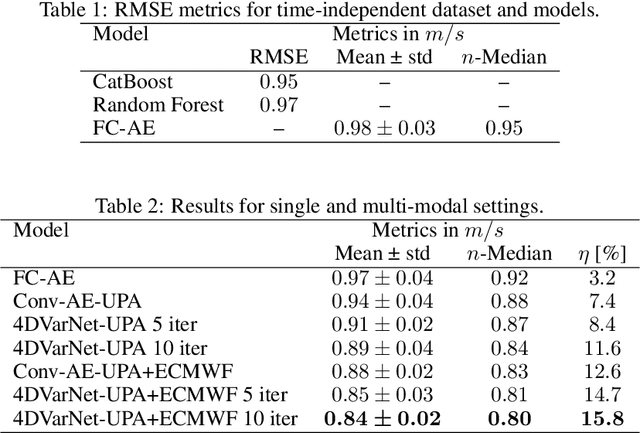


Abstract:Wind speed retrieval at sea surface is of primary importance for scientific and operational applications. Besides weather models, in-situ measurements and remote sensing technologies, especially satellite sensors, provide complementary means to monitor wind speed. As sea surface winds produce sounds that propagate underwater, underwater acoustics recordings can also deliver fine-grained wind-related information. Whereas model-driven schemes, especially data assimilation approaches, are the state-of-the-art schemes to address inverse problems in geoscience, machine learning techniques become more and more appealing to fully exploit the potential of observation datasets. Here, we introduce a deep learning approach for the retrieval of wind speed time series from underwater acoustics possibly complemented by other data sources such as weather model reanalyses. Our approach bridges data assimilation and learning-based frameworks to benefit both from prior physical knowledge and computational efficiency. Numerical experiments on real data demonstrate that we outperform the state-of-the-art data-driven methods with a relative gain up to 16% in terms of RMSE. Interestingly, these results support the relevance of the time dynamics of underwater acoustic data to better inform the time evolution of wind speed. They also show that multimodal data, here underwater acoustics data combined with ECMWF reanalysis data, may further improve the reconstruction performance, including the robustness with respect to missing underwater acoustics data.
A developmental approach for training deep belief networks
Jul 12, 2022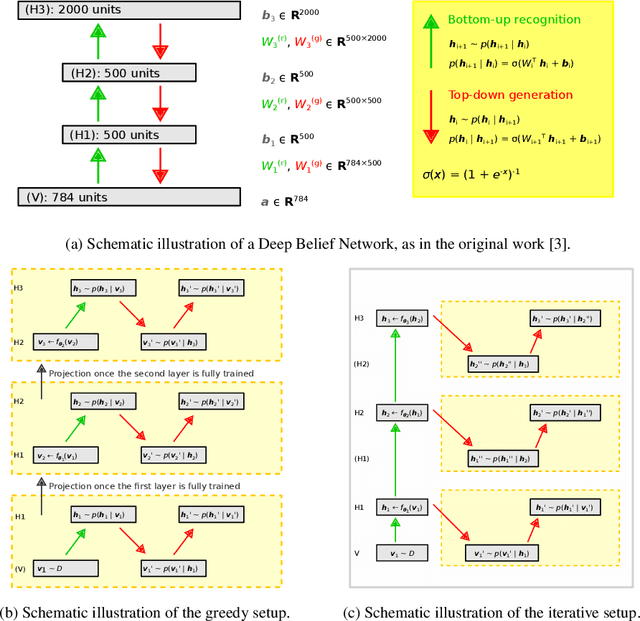
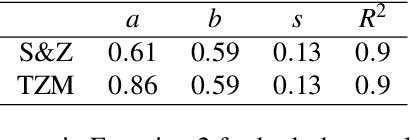
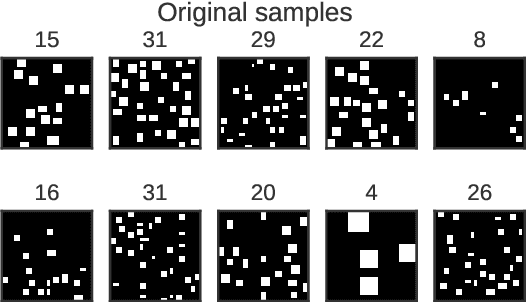
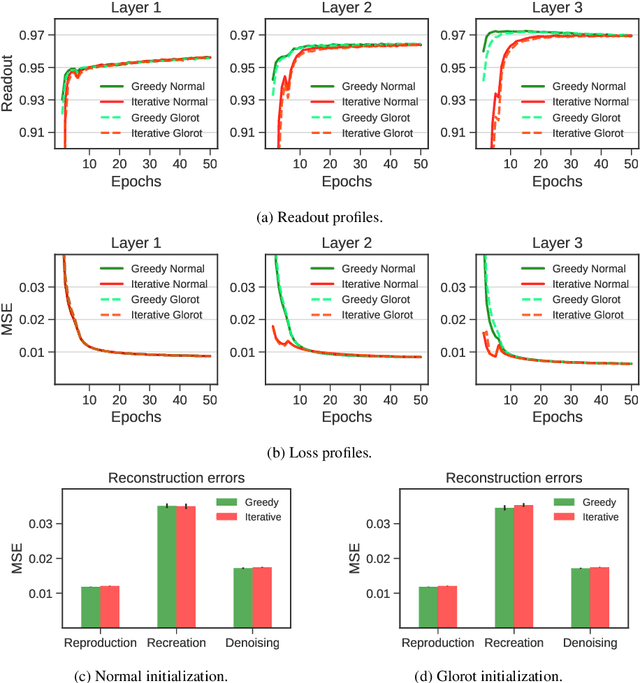
Abstract:Deep belief networks (DBNs) are stochastic neural networks that can extract rich internal representations of the environment from the sensory data. DBNs had a catalytic effect in triggering the deep learning revolution, demonstrating for the very first time the feasibility of unsupervised learning in networks with many layers of hidden neurons. Thanks to their biological and cognitive plausibility, these hierarchical architectures have been also successfully exploited to build computational models of human perception and cognition in a variety of domains. However, learning in DBNs is usually carried out in a greedy, layer-wise fashion, which does not allow to simulate the holistic development of cortical circuits. Here we present iDBN, an iterative learning algorithm for DBNs that allows to jointly update the connection weights across all layers of the hierarchy. We test our algorithm on two different sets of visual stimuli, and we show that network development can also be tracked in terms of graph theoretical properties. DBNs trained using our iterative approach achieve a final performance comparable to that of the greedy counterparts, at the same time allowing to accurately analyze the gradual development of internal representations in the generative model. Our work paves the way to the use of iDBN for modeling neurocognitive development.
Emergence of Network Motifs in Deep Neural Networks
Dec 27, 2019



Abstract:Network science can offer fundamental insights into the structural and functional properties of complex systems. For example, it is widely known that neuronal circuits tend to organize into basic functional topological modules, called "network motifs". In this article we show that network science tools can be successfully applied also to the study of artificial neural networks operating according to self-organizing (learning) principles. In particular, we study the emergence of network motifs in multi-layer perceptrons, whose initial connectivity is defined as a stack of fully-connected, bipartite graphs. Our simulations show that the final network topology is primarily shaped by learning dynamics, but can be strongly biased by choosing appropriate weight initialization schemes. Overall, our results suggest that non-trivial initialization strategies can make learning more effective by promoting the development of useful network motifs, which are often surprisingly consistent with those observed in general transduction networks.
 Add to Chrome
Add to Chrome Add to Firefox
Add to Firefox Add to Edge
Add to Edge